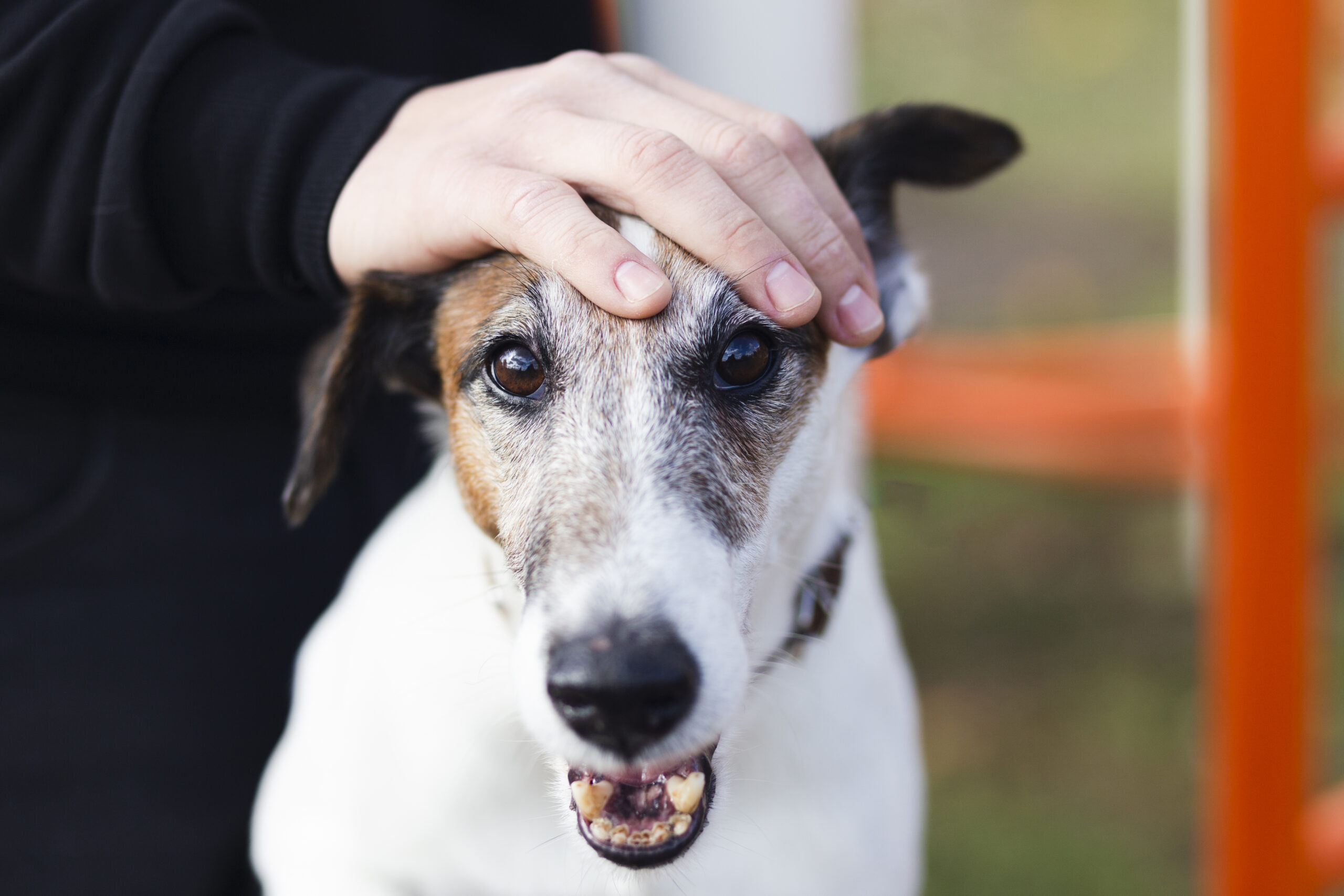In this guide, we will cover the most common behavioral problems in dogs and provide solutions that will enable you to strengthen the bond you share with your furry friend.
Getting a dog is a joy in a person’s life, however, it can be challenging at times. Dealing with behavioral problems can indeed be quite difficult. The first step in solving Behavior Issues is understanding why dogs behave in certain ways. Most behavior issues stem from a lack of communication between the dog and its owner. With the right training methods, including patience and consistency, most issues can be managed or resolved.
Reasons for Excessive Barking
Barking is one of the primary ways dogs communicate. However, excessive barking is a real problem in the dog world. While barking can serve a variety of purposes, it can also help communicate threats, attentions, boredom, or anxiety issues.
Solutions:
- Establish “Silence”: Make sure that you determine the reason behind the barking before trying to fix it. Is your dog anxious, bored, or excited? Understand the reason first. Once you do, use commands to eliminate the barks.
- Provide Training: Determine a “silent” command with your dog. Whenever your dog stops barking as per the command, reward them. This will reinforce the desired behavior.
- Reduce Triggers: For those dogs who have the habit of barking at people or animals walking past the house, consider drawing the curtains/shades or creating a peaceful environment to reduce the stimuli from outside.
- Consistent Training: Remember to be patient with their training. Be persistent and give praise or treats when they issue responses to commands.
Chewing
Why Dogs Chew
Chewing is a natural behavior especially with young pups during the teething stage. However, it can become quite an issue if they begin to chew inappropriate like furniture or personal items.
Solutions:
- Provide Chew Toys: Chewing toys that are safe and disallowed to be chewable are provided in variety. They can be rotated to sustain your dog’s interest.
- Redirect Behavior: If your dog is spotted reclining on inappropriate items, gently redirect them towards a chew toy.
- Exercise and Stimulation: Make sure your dog is properly exercised to burn off pent up energy. This lowers the chances of destructive chewing.
Digging
Why Dogs Dig
Causation for digging includes boredom, anxiety, or an instinct driven to hunt as well as to try and create a cooler resting place. Some breeds like the terrier type dogs are more prone to digging due to their genetic background.
Solutions:
- Provide a Digging Zone: If your dog is really keen on digging, allow them to dig freely in areas like sandpits.
- Reduce Boredom: Less likely to boredom driven digging if there is more play time, mental activities, and exercise.
- Block Access: If needed, block access to garden/ flower beds that are not allowed to be dug into.
Separation Anxiety
What Is Separation Anxiety?
A form of stress can arise in dogs when they become overly anxious when left alone. Symptoms of separation anxiety include excessive barking, chewing, and even defecating indoors shortly after the owner departs.
Solutions:
- Desensitization: Start with short absences and gradually increase the duration of time away to get your dog used to being alone.
- Avoid Emotional Goodbyes: Keeping departures and arrivals calm can help lessen your dog’s anxiety.
- Create a Safe Space: Leave your dog in a familiar area filled with comforting toys or items that smell like you to reduce anxiety.
Inappropriate Elimination
Why Dogs Eliminate Indoors
Incomplete house training, anxiety, or territorial marking can result in urine and feces being deposited indoors.
Solutions:
- Rule Out Medical Issues: Visit a vet to check if conditions like UTIs are causing the behavior.
- Revisit House Training: Take your dog outside often, especially after meals or naps using a strict potty schedule to reinforce basic training.
- Positive Reinforcement: Praise and reward your dog immediately after eliminating outside to strengthen the desired behavior.
Begging
Why Dogs Beg
Providing leftover food can lead to dogs begging for food. This behavior can lead to obesity and other health problems.
- Do Not Feed From The Table: Avoid giving your Dog Food from the dinner table. Instead, provide them with their meal in their own designated eating area.
- Ignore Begging: During meal times, ignore any begging from your dog. Over time, they will learn that this behavior does not yield results.
Chasing
Reasons for Chasing
For dogs, chasing is a natural instinct, but pursuing other animals, people, or vehicles can be dangerous.
Solutions:
- Strong Come Commands: Make sure you teach your dog to respond well to “come” and reward them when they do it, particularly in challenging environments.
- Keep Dog Leashed: Always maintain leash control over your dog in outdoor settings, or anywhere they can encounter potential triggers.
- Regular Exercise: Regular exercise can help reduce excessive energy that may result in the urge to chase.
Jumping Up
Reasons Why Dogs Jump Up
They often jump up to greet people and this can be a problem, especially with larger or more energetic breeds.
Solutions:
- Turn your back: Avoid encouraging your dog’s jumping by offering attention. Instead, wait until they calm down and then offer praise.
- Teach replacement behaviors: Train dogs to sit when greeted and then reward calm demeanor during those interactions.
- Uniformity: All members of the household should adhere to the same rules so that the dog does not get mixed signals.
Biting
Why Dogs Bite
Puppies and adult dogs alike can bite because of fear, defensiveness, or even during playful moments. It is crucial to instill bite inhibition early on, even though biting is a common behavior in puppies during teething.
Solutions:
- Socialization: Provide your dog with diverse environments, people, and animals to reduce biting due to fear.
- Bite Inhibition Training: Withdrawing attention and yelping when a puppy bites during play helps teach them that biting is not acceptable.
- Seek Professional Help: Consult a dog trainer or behaviorist if the biting is aggressive or fear-based.
Aggression
Why Dogs Show Aggression
Fear, territorial defensiveness, or resource guarding are potential triggers of aggression in dogs. Addressing aggressive behavior in dogs is important, especially to prevent inflicting harm to others.
Solutions:
- Consult a Vet or Trainer: Some cases of aggression could be caused by underlying medical conditions, therefore, a vet should be consulted first. A professional dog trainer or behaviorist can assist with behavior modification.
- Avoid Triggers: While training, manage or evade situations that provoke your dog’s aggression.
- Positive Reinforcement: Better responses can be encouraged through praise and treats for calm, non-aggressive behavior.
Final Thoughts
To manage and fix common Behavioral Problems in Dogs Requires a lot of Understanding, consistency, and patience. With the right training strategies, unwanted behaviors can be corrected or prevented by addressing the underlying reasons behind these behaviors. Remember, training is not solely about punishment; rather, it is an opportunity to strengthen the relationship between you and your dog through effective communication and trust.
EXTRA:
> Are you curious about the benefits of cat ownership? Discover how a feline companion can boost your well-being, reduce stress, and add endless joy to your life in our latest blog post.
>Download our app on iOS or Android here> iOS & Android












